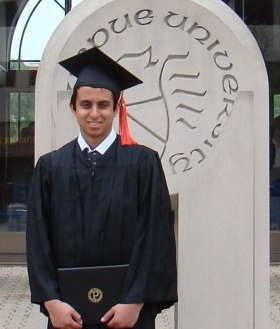| Line 26: | Line 26: | ||
''' <big><big><big> 3.2 Integrating Factor </big></big></big> ''' | ''' <big><big><big> 3.2 Integrating Factor </big></big></big> ''' | ||
| − | <font size="3px"> Those differential equations that can be solved by the above method are pretty special (and easy). There is a more common form for first-ordered differential equation: <math>\frac{dy}{dt}+p(t)y=q(t)</math>, where <math>p(t)</math> and <math>q(t)</math> are polynomials with respect to <math>t</math>. Sometimes we have coefficients for <math>\frac{dy}{dt}</math>, just divide them on both sides. | + | <font size="3px"> Those differential equations that can be solved by the above method are pretty special (and easy). There is a more common form for first-ordered differential equation: <math>\frac{dy}{dt}+p(t)y=q(t)</math>, where <math>p(t)</math> and <math>q(t)</math> are polynomials with respect to <math>t</math>. Sometimes we have coefficients for <math>\frac{dy}{dt}</math>, just divide them on both sides to obtain the standard form. |
Revision as of 23:13, 12 November 2017
Basic Methods to Solve 1st-Order ODEs
3.0 Abstract
By now we have known what is a differential equation and how its solutions conduct. It's time to solve it, like plenty of linear equations we have done before.
3.1 Separable Equation
The easiest method is to separate the variables. This method is switching the variables to make the same variable on the same side, in order to integral on both sides and solve out the function (solution) The standard form of differential equation to use this method is like $ \frac{dy}{dt}=f(y)g(t) $, where $ f(y) $ and $ g(t) $ are easy to be separated out.
For example, we want to solve the differential equation $ \frac{dy}{dt}=-2yt $, where $ y(0)=1 $.
Now we start separating our variables. We put all items with respect to our dependent variable $ y $ on the left hand side of the equation, and all with respect to our independent variable $ t $ on the right hand side. Hence we get $ \frac{1}{y}dy=-2tdt $.
Integrate on both sides $ \int\frac{1}{y}dy=\int-2tdt $ and get $ ln|y|=-t^2+C $, where $ C $ is a constant.
Reconstruct this equation, $ y=e^{-t^2+C}=e^C e^{-t^2}=Ae^{-t^2} $, where $ A $ is a constant, $ A=e^C $.
Plug in the initial value $ y(0)=1 $. We have $ Ae^0=1 $, so $ A=1 $.
So the final solution is $ y=e^{-t^2} $. This corresponds to the concept we built up in the previous tutorials: The solution to a differential equation is a function.
3.2 Integrating Factor
Those differential equations that can be solved by the above method are pretty special (and easy). There is a more common form for first-ordered differential equation: $ \frac{dy}{dt}+p(t)y=q(t) $, where $ p(t) $ and $ q(t) $ are polynomials with respect to $ t $. Sometimes we have coefficients for $ \frac{dy}{dt} $, just divide them on both sides to obtain the standard form.

